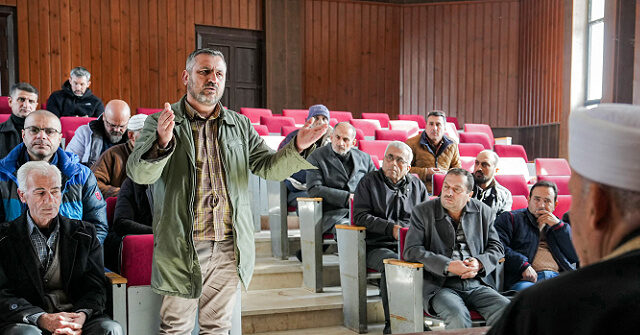The Alawite community in Syria, a small yet significant Shiite sect that has historically wielded political influence, finds itself in a precarious situation following the recent downfall of the Assad regime. The Alawites, constituting around 10% of Syria’s predominantly Sunni Muslim population, have their cultural and political heart in the coastal city of Latakia. The community’s power and influence surged during Hafez al-Assad’s rule, beginning in 1971, which transitioned to his son Bashar after Hafez’s death in 2000. Under their authoritarian regime, Alawites gained substantial positions in government and the military, largely due to promises of power and wealth made by Hafez al-Assad. However, despite their apparent support for the Assad dynasty, many within the community express resentment, feeling that the promised prosperity never materialized.
As the brutal civil war raged on, some Alawites voiced their loyalty to Bashar al-Assad due to fears of reprisal from extremist groups, particularly as the Islamic State rose to power. The younger Assad utilized the community’s fears by portraying himself as their primary protector against the chaos of militant groups. This narrative led many Alawite youth to serve in the Syrian army, bearing the brunt of the war’s hardships. With the recent rapid advances by the Sunni-led Hayat Tahrir al-Sham (HTS) rebel group towards Damascus, the Alawite community is increasingly concerned about its safety and future. The strategic aim of HTS to restrict Assad’s access to vital Alawite areas puts the community in a vulnerable position, and their fear of being targeted as regime loyalists has intensified.
With HTS’s military success, associations between the Alawites and the Assad regime have raised anxieties within the community. The insurgents have made it clear they seek to eradicate remnants of the Assad legacy, symbolically demonstrated by their desecration of Hafez al-Assad’s tomb. During these devastating moments, HTS has attempted to reassure the Alawite leaders that they will not face retaliation, branding themselves as more moderate than previous extremist groups. However, many Alawites remain skeptical of these claims, fearing that the promises of preservation and protection could evaporate once the international community’s attention shifts away from Syria. Concerns are rife regarding the implementation of strict sharia law by HTS, leading community members to reminisce about the secular nature of the previous regime’s governance.
The ongoing violence and instability in Syria leave many Alawites feeling endangered, especially as their towns around Latakia have fallen under the control of more radical Islamist factions not aligned with HTS. Reports of violence against Alawites by these groups, including robbery and beatings, exacerbate their fears. Additionally, the shadow of the notorious Shabiha paramilitary group, historically associated with the Assad regime and its brutal tactics, looms large, leaving many in the Alawite community wary of potential retribution from fellow Syrians. These compounded fears have led to a sense of isolation, with some choosing to remain indoors to avoid detection and retribution, while others have fled their homes in desperation.
Moreover, the Alawites’ plight is complicated by widespread resentment from other Syrian communities, who often view them as beneficiaries of the Assad regime’s patronage system. Many within the Alawite faction insist they suffered equally under decades of oppression, highlighting the economic hardships prevalent among their ranks as evidence of this shared struggle. Despite their claims of solidarity with other Syrians in celebrating the fall of Bashar al-Assad, distrust remains high, and accusations of privilege persist. This complex label of oppression and privilege creates further fractures within Syria’s diverse socio-political landscape at a time when unity is desperately needed.
In conclusion, the Alawite community’s future hangs in the balance as they navigate an increasingly hostile environment. The harsh realities of war and shifting political tides have left them feeling vulnerable, with rampant fears of persecution looming large. Many Alawites yearn for safety and security and hope for a collective approach to rebuilding their lives in post-Assad Syria, concurrent with a renewed commitment to unity among all Syrian factions. As the nation grapples with its multifaceted challenges, the path forward for the Alawites may depend on their ability to forge necessary alliances while maneuvering through a landscape fraught with distrust and a relentless quest for vengeance.

